Recently, the most talked-about term in China has been “APEC.†While “APEC Blue†captured attention, there’s more to consider. President Xi Jinping’s emphasis on “interconnection†during APEC highlights a growing focus on the Internet of Things (IoT). At the recent ARM Technology Forum, ARM's efforts in IoT once again sparked industry interest. Rather than simply replicating past success, ARM aims to leverage its position to unlock the vast potential of the IoT market.
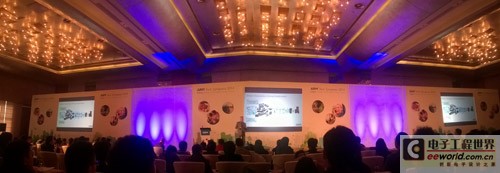
Figure 1: 2014 ARM Technology Forum site
Opening the "Tip of the Iceberg"
Today, companies are increasingly looking to join ecosystems rather than operate alone. The evolution of business ecosystems—from centralized to open-source and community-based—offers greater flexibility and innovation. However, what is the most complete IoT ecosystem we see today? Dr. John Heinlein, Vice President of Global Marketing at ARM, stated, “What we refer to as ‘intelligence’ in IoT is just the tip of the iceberg. Beneath it lies a complex and expansive ecosystem that remains largely unseen. This complexity means that even large companies like Alibaba may appear to be struggling, but deeper exploration reveals a diverse and evolving landscape with new growth opportunities.â€
Take shared photos as an example. For the average user, it seems simple: take a photo, upload it to social media, and friends view it. But behind this process lies a chain of technologies—from mobile devices to data transmission, signal processing, base stations, RF, computing, storage, and more—all potentially powered by ARM technology. ARM partners innovate at every level, from chip design to software, tools, and middleware. With its strong ecosystem, ARM is confident in opening the “tip of the iceberg.â€
Just Works
As smart homes become more common, they require less technical expertise. But what about children or elderly users? Smart homes should be intuitive and easy to use. Dr. Heinlein referenced Douglas Adams’ famous quote: “We are often held back by technology. What we really want is something that just works.†He believes that ARM and other tech companies must provide not just technology, but solutions that are functional and user-friendly. The latest release of the ARM Mali Multimedia IP Suite exemplifies this ease of use.
While the surface may seem simple, the underlying complexity requires careful design. Chip design, board design, and software integration all play a role. EDA tools have evolved from manual layout to CAD and now to integrated hardware-software design, accelerating development. Dr. Heinlein noted, “ARM and TSMC are working together on the 10nm FinFET process for 64-bit ARM architecture processors. From 0.25um to 10nm is not just a scaling advancement, but a culmination of various hidden technologies, including logic, analog, embedded flash, RF, image sensors, high voltage, MEMS, and power ICs.â€
ARM mbed Solves Resource Gaps in the IoT Era
Dr. Heinlein continued, “Improvement enables more complex systems and new solutions, including new consumers, applications, and components. Accumulation of small data makes big data possible. ARM mbed OS connects to mbed device servers through open standards, then to IoT services or applications, ensuring secure end-to-end small data. Network data objects and management eventually form big data.â€
He also discussed challenges in next-generation infrastructure, such as managing data demands, energy constraints, bandwidth deployment, and increasing density. These challenges foster new business models. At least 90% of current IoT ecosystems remain invisible, yet they hold significant potential. “We should bring these emerging creators into the visible market,†he said.
Michael Horne, VP of Business Strategy and Operations at ARM’s IoT division, added, “In the 20th century, processors were scarce. In the IoT era, the scarcity lies in energy and productivity. To get to market quickly, we need smarter, scalable, and system-driven solutions. Through investment in standards, simplifying innovation, and providing robust, secure, and scalable products, ARM is committed to delivering connectivity, security, and simplicity in IoT.†The ARM mbed IoT Device Platform includes mbed OS, mbed device server, and the mbed ecosystem, offering five key advantages: productivity, security, connectivity, management, and efficiency.
mbed OS is a free operating system designed for Cortex-M based hardware, featuring security, communication transport, and device management. Its strengths include fast time-to-market, low power design, comprehensive security, high connectivity standards, and internal device management.
The mbed device server offers direct integration, regular connection support, full security management, leading open-source standards, and lightweight management.
The mbed ecosystem partners include cloud providers, system and channel partners, and chip manufacturers. These partners share a vision and open standards through the mbed IoT platform, enabling commercial deployment of IoT devices and services.
In the end, you can use mbed + ARM chips + Sensinode to design IoT applications, sharing security, connectivity, and driver resources for smart cities and homes via mbed OS.
The Temptation of “Double Elevenâ€
Mr. Pan Aimin, Chief Architect at Alibaba Yunu, gave a keynote at the ARM Technology Forum on the development, opportunities, and challenges of the mobile operating system in China. He highlighted Alibaba’s “Double Eleven†event, where transaction volume exceeded 57.1 billion yuan, with 40% of transactions on mobile. This data reflects the importance of mobile platforms in China’s economy. Mr. Pan believes mobile OS is becoming a focus for both government and industry, with a complete industrial chain from chips to system talent. With mobile internet, cloud computing, and IoT, China’s mobile OS has a future, leveraging cloud services, payment support, and the mobile ecosystem (ARM, chip vendors, etc.) through app mode and user experience.
Accelerating Mobile Innovation
More connectivity is driving major changes, said Dennis Laudick, VP of Marketing at ARM Multimedia Processors. “IoT will transform society. With rapid proliferation of consumer electronics, smartphones have become major computing devices. Infrastructure and servers are evolving, with the first ARM-based server expected to have 50 connected devices per household by 2020. ARM will release more products to support mobile innovation, offering higher performance, lower power consumption, better tools, and faster development.â€
ARM envisions that Cortex and mbed technologies can truly connect objects in the future. However, this complex task requires partner collaboration. Dennis explained, “Our partners’ unique advantages make every link of the ecosystem faster, including SoCs, hardware, interfaces, operating systems, middleware, and applications. ARM provides a common foundation for the entire ecosystem—system architecture, software, and proven IP.†For example, ARM’s Juno reference development platform for 64-bit Android integrates many advanced technologies, including the ARMv8 instruction set, and supports big.LITTLE asynchronous architecture with two Cortex-A57s, four Cortex-A53s, and the latest Mali T-624 core. Another example is ARM adding intelligent power distribution (IPA) to the Linux kernel (including Android).
Mali Shows What You Want
Images and videos are the “souls†of many IoT applications. According to statistics, 90% of device content revenue comes from games, which are becoming more complex. 53% of mobile data is video, and 73% of mobile devices have HD or higher resolution. As display complexity and resolution increase, the need for efficient, high-performance, low-power, and fast-to-market multimedia IP becomes critical. ARM’s new integrated Mali multimedia IP suite (including Mali-V550 video accelerator, Mali-DP550 display processor, and Mali-T800 graphics processor series) efficiently delivers rich visual content with leading processors.
Dennis noted, “Last year, Mali had 400 million shipments, and more and more mobile devices are using it. The new Mali multimedia IP suite allows ARM partners to develop diverse multimedia systems faster, gain profit from system bandwidth efficiency, seamlessly integrate software, focus on differentiation, and reduce risk.â€
ARM provides multimedia IP at the system level, enabling chip partners to save energy through system-wide bandwidth-saving technologies like ARM Frame Buffer Compression (AFBC) and Fully Adaptive Texture Compression (ASTC). Technologies such as Smart Elimination (TE) and Smart Synthesis (SC) are also used across all Mali IP blocks, avoiding duplication and improving energy efficiency. The Mali-V550 and Mali-DP550 benefit from Motion Search Elimination (MSE), reducing bandwidth by up to 35%.
The next-generation Mali graphics processor supports mobile diversity, achieving the perfect balance of performance and efficiency. It supports 4K and 10-bit YUV, resulting in 55% better 3D gaming performance and 60% bandwidth savings. The Mali-T820 is optimized for entry-level products, with performance density up to 40% compared to the Mali-T622. The Mali-T830 is 55% better than the Mali-T622, while the Mali-T860 is 45% more power-efficient than the Mali-T628. These improvements meet the most demanding consumer needs and deliver an ultimate visual experience on high-performance mobile devices.
The Mali-V550 is ARM’s first video IP with multi-standard codec, supporting HEVC (H.265) for encoding and decoding in a single core. It can resolve 1080p at 60 frames per second with one core, and 4K at 120 frames with eight cores. The Mali-DP550 supports up to seven layers of image compositing, optimized for dynamic and lifelike UIs. It can offload tasks like compositing, scaling, rotating, and post-processing to dedicated processors, enhancing functionality.
Dennis added, “Mali also embodies the concept of ‘just works,’ allowing customers to use it immediately without getting bogged down in technical details. The future should be the most suitable SoC for each application. The new Mali Multimedia IP Suite represents ARM’s expansion in distributed processing, ensuring that vision-centric content runs on the most appropriate processor. Of course, this requires partnership within the ecosystem.â€
Since 1991, ARM processors have surpassed 50 billion units, and the company is now aiming for 100 billion. When will this happen? I believe it won’t be long before new opportunities in medical, education, smart homes, and automotive fields contribute to reaching that milestone.
Postscript: During lunch break, the reporter overheard a conversation between two engineers. The key word was “too horrible.†ARM’s ambition truly shocked the industry engineers, and hopes that it can leverage its strengths and those of its partners to explore the unpredictable “iceberg.†Welcome to read the reporter’s July article, “The Internet of Things Carries the Ambition of ARM Unified Hardware and Software.â€
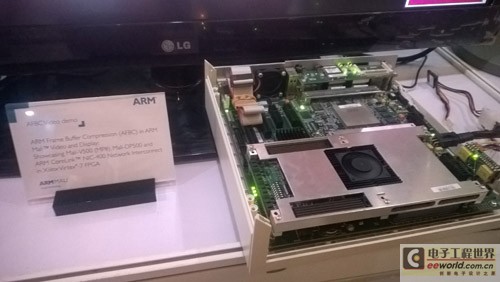
Figure 2: ARM Mali video display demo
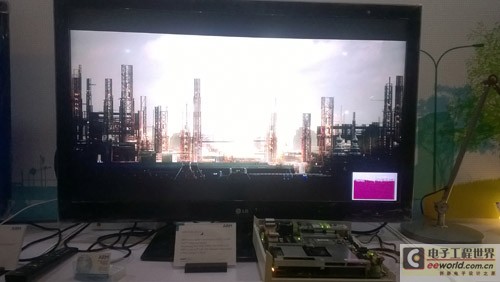
Figure 3: ARM Mali video display demo
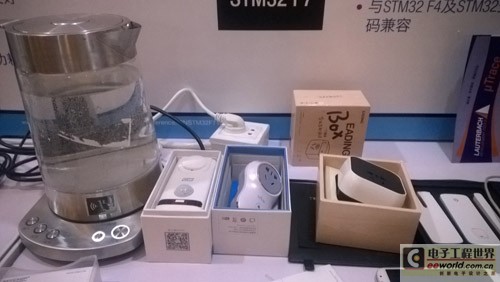
Figure 4: Various ARM-driven smart devices
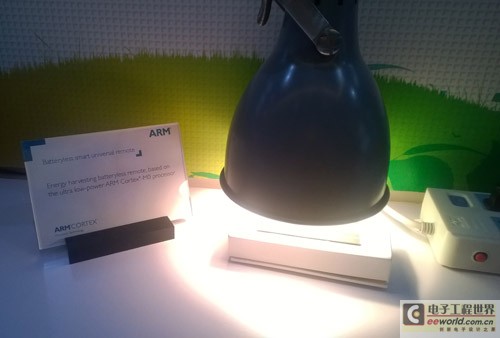
Figure 5: ARM Cortex-M0 energy saving solution
Solar Panel Cleaning Tools,Solar Cleaning Brush,Solar Panel Cleaning Machine,Solar Panel Cleaning System Tools
GuangZhou HanFong New Energy Technology Co. , Ltd. , https://www.gzinverter.com